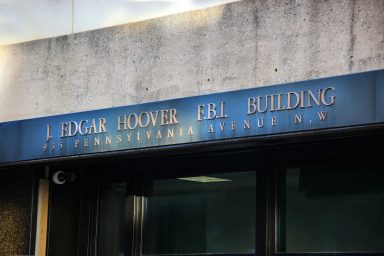The major decision for the jury that sentenced Boston Marathon bomber Dzhokhar Tsarnaev to death was whether he was a lone terrorist waging jihad or a gullible teen misled by his radicalized brother. On the seeming other end of the political spectrum, neo-cons are pulling out the gloves to gear up for 2016. What do they have in common? According to this 2004 documentary series, there are parallels between the rise of radical Islam and the rise of the neo-conservative movement that are worth taking a look.
 Written and produced by Adam Curtis, The Power of Nightmares—The Rise of the Politics of Fear explores the similarities between the ascent of the American Neo-Conservative movement and the trajectory of radical, fundamentalist Islamism in three one-hour films.
Written and produced by Adam Curtis, The Power of Nightmares—The Rise of the Politics of Fear explores the similarities between the ascent of the American Neo-Conservative movement and the trajectory of radical, fundamentalist Islamism in three one-hour films.
More controversial, perhaps, than even this comparison, is the argument that the threat of radical Islamism—al-Qaeda in particular—has been exploited by politicians around the world, especially American neocons, in order to advance their own agenda.
Episode 1: Baby It’s Cold Outside
This episode traces the origins of pan-Arab Islamist ideology to its founder Said Qtub—an Egyptian student who studied in America and became incensed with American commercialism and its corrupting nature. It also details the work of Leo Strauss, a Platonic philosopher at the University of Chicago who was extremely influential over the growth of American neo-conservatism and emphasized deceit as necessary for elites to maintain control over an orderly society.
Episode 2: The Phantom Victory
When the atheist USSR invades Afghanistan, American neoconservatives and radical Islamists throughout the Mideast are brought together in their fight to free the Afghan people from Soviet domination. But both groups are fooled by their own propaganda, claiming credit for a victory fought and won by the Afghan mujahedeen themselves.
Episode 3: The Shadows in the Cave
The final episode shows how the terrorist attacks of September 11 presented an opportunity for neoconservatives to reconstruct a monolithic enemy that would unite the American people after the Soviet Union’s demise. The radical Islamists also benefitted from this exaggerated portrayal of them as successful fighters against the West. Despite the falsity of this premise, both ideologies find it politically useful to hype the power and scope of al-Qaeda, leading to the present-day conception of Islamic terrorism as a global network of interconnected, hierarchical cells under the command of a single leader.
This series originally ran on WhoWhatWhy.org in February 2013.



